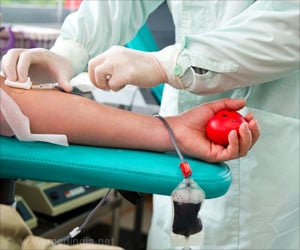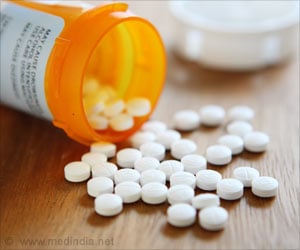INSIGHT - The Consumer Magazine (September-October 2007), published by Consumer Education and Research Society (CERS), Ahmedabad, carries the findings of its in-house comparative product testing laboratory on 17 brands of compounded asafoetida in the powder, semi-solid, solid and granule form. It has recommended the following as the ‘Best Buys’ : Ramdev Premium and Parth in powder form; Cycle in solid form, and Gopal in granule form. All 17 brands tested are sold countrywide.
The laboratory tested compounded asafoetida against seven main parameters, viz. alcoholic extract, moisture content, labelling, rodent contamination, total ash, acid insoluble ash and foreign odour. All the tests were carried out well within the shelf-life of the samples taken.Alcoholic Extract
The Prevention of Food Adulteration (PFA) Act requires at least 5 per cent (by mass) of alcoholic extract (raw hing) in compounded asafoetida. The more, the better. The maximum alcoholic extract was found in Ramdev Premium (9.1 per cent), followed by Parth (7.2 per cent), both powder. Compounded hing with pungency lower than the specified limits can be outrightly termed ‘substandard’.
Nine of the 17 brands tested failed to meet the requirements of minimum pungency. Rasamati (3.9), Laxmi (3.4), Annapurna 222 (2.9) L.G.Semi-Solid (2.7) and the list descends to Ramdev Super (2.6) L.G.-Powder (2.5), Annapurna 151 (2.5), Huns (1.8) and Krishna (1.1).
The least percentage of alcoholic extract was found in Krishna 755 (1.1 per cent) and Huns 009 (1.8 per cent). So, one can safely conclude that these brands had less pungency in the form of raw hing in them. Consequently, the consumer would have to add more quantity of hing to the food preparation to get the required pungency and aroma. These brands, thus, unjustly enrich the manufacturers by increasing the burden on the pocket of the consumers.
Moisture Content
L.G., in its powder and semi-solid forms failed to conform to the standards with 13.9 and 18.9 per cent, respectively. N.S. and P.C. brands were also found non-conforming to this parameter. They contained 19.3 and 17.4 per cent moisture respectively. This meant that these manufacturers were selling less quantity to the consumers as the weight indicated on the pack would be inclusive of the moisture. So, as a consumer, we lose on weight and shelf-life of hing with brands like L.G., N.S. and P.C.
The total ash test is carried out to find out the presence of inorganic matter in the product such as minerals, silica, etc. The acid insoluble ash test indicates the value of acid insoluble ash. A high value of acid insoluble ash suggests the presence of sand, dust, dirt, stones, etc. that get mixed during processing or are present in the parent material (here, hing) as contamination. The higher value indicates inferior quality and low hygiene standards in the production process.
These tests show rodent contamination, foreign odour, fungus, insect attack, etc. on the compounded asafoetida.
Majithia had rodent contamination and foreign odour in it. N.S. showed insect and fungus attack also.
Weight
Huns 009 weighed less than the labelled weight on the packet.
Out of eight 100-gm packets tested, seven of Huns 009, all eight of P.C., and four of Krishna 755 weighed less than the labelled weight.
Out of forty 10-gm packets of Cycle tested, 34 weighed less. On an average it gave one gram less per pack of 10 grams.
Other brands also had packets weighing less than the weight marked on the packets but the error was within the permissible limits specified by the Standards of Weights and Measures.
Labelling
Gopal brand of hing available in the granule form gave inadequate labelling information and hence did not conform to the labelling parameter. It did not carry the ‘vegetarian logo’ on the packets. The information on the packets was only in Hindi.
Weightages
Considering the interest of hing-consumers, we gave weightages to parameters. Since pungency is most significant in hing, it was given 50 per cent weightage. 20 per cent was attributed to moisture. Labelling is the only source of information to consumers so 10 per cent was assigned to it. 5 per cent weightage each was given to total ash, acid insoluble ash, rodent contamination and foreign odour.
As a policy, before publishing and publicising the results, we convey the test findings to all the manufacturers for their views and comments. They receive the results of their own products only.
Annapurna said that the less weights of its packets might be due to variations in the weight of the container of the product and/or as a result of negligence of the weighing staff.
P.C. Company, with respect to the moisture content in its brand, said that the sample for the test must be dried and hardenend which CERS had not done so our test results, the company said, were incorrect.
L.G. did not agree to our report and claimed that according to Italab Laboratory, its product conformed to the limits prescribed in the PFA Act that does not prescribe any moisture content.
Our tests found that the words like ‘Premium’, ‘Deluxe’, ‘Super’ or such other words mean nothing special nor do they have any significance in terms of quality of the ‘hing’. The quality of ‘hing’ can be ascertained by the Agmark grades - ‘standard’, ‘special’ or ‘extra-special’. These grades represent a better quality of the ‘hing’.
Details of the rating and ranking, the ‘best buy’ and excerpts of our correspondence with the manufacturers have been published in the September-October 2007 issue of INSIGHT - The Consumer Magazine.
Source-Medindia





